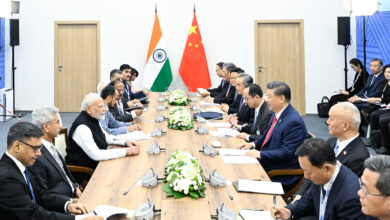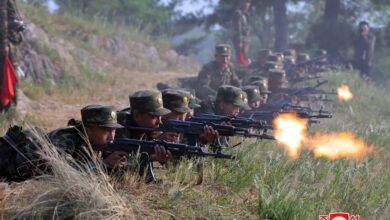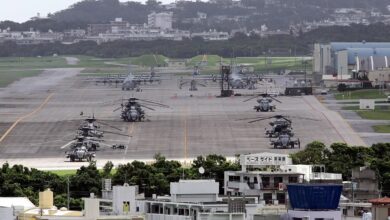
The April 2018 Wuhan summit between Indian Prime Minister Narendra Modi and Chinese President Xi Jinping focused on strengthening economic relationships between the neighbors. The two also acknowledged the need to manage strategic contradictions between New Delhi and Beijing, and agreed on the need to maintain their economic relations despite regional disagreements. The Chinese president even went on to claim China and India as the “the backbone of the world’s multipolarization and economic globalization.”
The informal meeting occurred days after India’s refusal to allow Australia to participate in the Malabar naval exercises. For many supporters of the Quadrilateral Security Dialogue, New Delhi’s decision to exclude Australia from naval exercises between India, the United States and Japan came as a big disappointment. While Canberra approached New Delhi to at least allow it observer status, a spokesperson for Australian Minister for Defence Marise Payne confirmed the Australian Navy would not be joining the drills that concluded last week in Guam. This move also earned India appreciation from Beijing.
Many see the possibility of a revival of the security dialogue as a potentially credible response to growing Chinese aggression. However, statements put out by the U.S., Indian, Japanese, and Australian foreign affairs offices following the 2017 working-level quadrilateral meeting revealed some serious differences in expectations from the relationship.
A renewed Quad 2.0?
Unlike the U.S. and Australia, Japan and India wish to tread more carefully against Beijing. India, especially, stands out in its desire to avoid raising tensions by fully embracing the Quad. New Delhi’s desire to pursue an independent foreign policy and manage its delicate relationship with Beijing, coupled with its continued mistrust of the United States and Australia, continue to hamper the Quad’s transition from idea to reality.
New Delhi’s reluctance is not unfounded as its concerns are both historical and operational.
The Quad fell apart in 2008 following Australia’s decision to distance itself, in response to Beijing’s displeasure over planned quadrilateral naval exercises. The decision had an immediate effect on India. While China’s strong reaction to the exercises had already made New Delhi hesitant, it was Canberra’s decision to instead proceed with a trilateral dialogue between Japan, Australia and the United States that became the final straw in India withdrawing its commitment to the four-way partnership.
As such, when the Quad was reinvigorated in November 2017 in Manila, India downplayed its significance in a press release issued by the Ministry of External Affairs.
The U.S. and Australia were quick to laud the Quad as a partnership aimed at upholding “freedom of navigation” and “overflight in Indo-Pacific,” and Japan stressed the importance of the partnership in “ensuring freedom of navigation and maritime security” in Asia.
India, on the other hand, chose to focus on calling for a “free, open, prosperous and inclusive Indo-Pacific region and challenges of terrorism,” without mentioning Chinese aggression in the South China Sea or New Delhi’s position on maritime security.
Data sharing, communication and interoperability
This apparent lack of shared expectations is in addition to the multitude of interoperability constraints shared by Japan, Australia and the United States in interacting with Indian military systems. The three nations’ militaries use similar combat systems and data links, while India’s military remains unwilling to share its data and allow access to its military communications systems.
New Delhi also refuses to sign an agreement on data sharing due to fears surrounding the loss of operational autonomy that might occur if India chooses to bind its military to U.S. codes and operating procedures. The reluctance to establish satellite links to share information stems from the fear that adopting the United States’ Communication and Information Security Memorandum of Agreement (CISMOA) would provide U.S. access to sensitive data about the nature and extent of India’s military. This would also allow the U.S. to intercept communications even outside the scope of carrying out joint exercises.
As a result, India has also refused to use a U.S. portable communications system called the CENTRIXS that could transmit situational awareness data to Indian ships during joint naval exercises. This causes the exercises to be conducted through rudimentary SMS-style data exchanges. Additionally, the Indian military turns off the radars and jammers on its Russian-designed Sukhoi jets when the U.S. and India carry out joint air exercises, limiting the extent to which the two militaries interact with each other.
Aussie rules?
Another major issue that plagues the quadrilateral relationship stems from India’s reservations about Australia’s commitment to the dialogue based on Canberra’s economic relationship with Beijing.
However, India too has concerns about upsetting China and values its economic partnership with Beijing. This fear was evident in India’s decision to decline Australia’s request to participate in this year’s naval exercises, and prevent a repeat of 2007 when China launched formal diplomatic protests in all four countries against the drills, causing then Australian Prime Minister Kevin Rudd to withdraw from the Quad.
This time, however, the situation is different. Australia’s declaration of the South China Sea as the ‘major fault line in the regional order’ in its 2017 Foreign Policy White Paper, and Prime Minister Malcolm Turnbull’s decision to call on China to respect the rules-based international order should also assuage Indian uncertainty about Canberra’s “strategic clarity” vis-à-vis China. In the same White Paper, Australia reinforced the centrality of the United States in its approach in the Indo-Pacific.
More recently, Australian concerns about a rumored Chinese military base in Vanuatu speaks to the direction of Australian foreign policy. This should also help demonstrate Canberra’s willingness to put its strategic interests over its economic ones.
Reconstructing the Quad won’t be easy due to the deep differences in each member’s outlook towards China. However, with the prospects of Quad 2.0 heating up, concerns about growing Chinese aggressiveness in the region should provide a strong enough rationale for the four nations to genuinely come together and forge a values-based partnership in the Indo-Pacific.
To fully invest in the Quad 2.0, India should make efforts to accept common logistical and communications standards in order to standardize the security partnership. New Delhi must also overcome its enduring mistrust about the United States and Australia to shed its position as an outsider, and truly revive the “Quad” as a credible response to China’s growing presence in the Indo-pacific.
Nishtha Sharma is an international relations student at the University of Sydney. She previously served as a research assistant intern at the Woodrow Wilson International Center for Scholars in Washington, D.C.
Connect with her on LinkedIn
All views and opinions expressed in this article are those of the author, and do not necessarily reflect the opinions or positions of The Defense Post.
The Defense Post aims to publish a wide range of high-quality opinion and analysis from a diverse array of people – do you want to send us yours? Click here to submit an Op-Ed.











